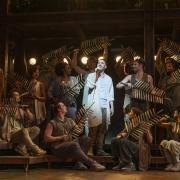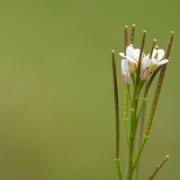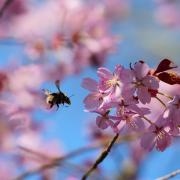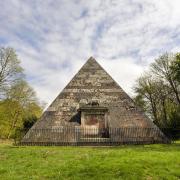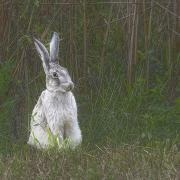Norwich art pioneers who founded painting school

One of the best-known – at least in East Anglia - groups of local artists in the early 19th century emerged in Norwich, with the creation of The Norwich Society of Artists, or the Norwich School, in 1803.
Renowned painters John Crome and Robert Ladbrooke were the society founders and they were joined by a raft of artists, amateur and professionals, including the sons of Crome and Cotman, Eloise Harriet Stannard, Joseph Stannard, James Stark and George Vincent.
The primary aim was to be a self-help discussion group for ‘an Enquiry into the Rise, Progress and present state of painting – with a view to point out the best methods of study to attain to Greater Perfection.’
Dr Giorgia Bottinelli, curator of historic art at Norwich Castle Museum and Art Gallery, is an expert on the Norwich School.

Why was the school so important, and how influential was it?
The Norwich Society of Artists, now known as the ‘Norwich School’, was founded in 1803 and was the first regional society of artists in Great Britain. The term ‘Norwich School’ refers to three generations of 19th-century painters who, at some time during their careers, lived and worked in Norwich and Norfolk. John Crome himself referred to ‘our Norwich School’ as early as 1816.
The Norwich School artists were linked by friendship, family and master-pupil relationships rooted in their city and county and their paintings reflect the influences they had on each other. Although their subject matter was diverse, including still life, portraiture and architecture, they are considered a school of landscape painters, very much associated with Norfolk.

Their work gives a rich and unique picture of the county: busy river scenes, heathland, fields, agriculture, cottages, wooded lanes, cityscapes, churches and the coastline all combine to record and promote a sense of place that reaches beyond the particular views they paint. Artists today continue to find inspiration in the Norfolk countryside with its broad skies and wide-open landscapes.
Just as Thomas Gainsborough is today associated with Suffolk and John Constable is linked with Dedham Vale so the Norwich School artists are known worldwide for their depiction of Norwich and Norfolk. They exhibited throughout Britain and soon became widely regarded throughout the country.
Their naturalistic landscapes were a departure from the traditional idea of painting landscapes as imaginary or idealised scenes. Their views of Norfolk’s windmills and wide countryside quickly came to be seen as quintessential portrayals of the region, and this idea of the Norfolk landscape still persists today.

Do you think it has the recognition it deserves?
The fortunes of the Norwich School artists have waxed and waned over the decades. The work of the pre-eminent Norwich School artists was much imitated which has led to inferior work being erroneously associated with the Norwich School.
A great deal of Norwich School paintings were made, exhibited and collected in Norfolk; an unintended consequence of this is that there perhaps aren’t as many examples to be experienced by the public in national institutions.
Yet, almost 100 years ago the Keeper of the National Gallery, Charles Collins Baker, wrote about Crome as one of ‘our three greatest masters’ – the other two being Constable and Turner – whose work demonstrated ‘that landscape painting … is peculiarly the business of the English genius.’

Even before then, as early as 1897, the British Museum curator Laurence Binyon wrote that Crome and John Sell Cotman were ‘the glories of the Norwich School … it is right to recognise that Crome and Cotman are far more than local glories: Norwich claims them by right of birth, England by right of genius.’
What are your favourite six pieces?
Whenever I am asked this question, I feel like I am being asked to choose between my children! There are so many fantastic paintings, watercolours, prints and drawings in our collection that it is really difficult to choose. However, the works are selected for this feature are some that I always love to return to.

John Sell Cotman, 1782-1842 Dock Leaves by a Stream, c.1805-06
This watercolour was traditionally called ‘At Kirkham’. Kirkham was 13 miles from Brandsby in Yorkshire where Cotman travelled in 1803 and 1805. The curious leaf forms are characteristic of Cotman and are found in several of his drawings and etchings from around this period. Cotman seems to have had a special fascination for foliage.
Although I have been a curator of historic art for over ten years now, my background is in modern art. When I first encountered Cotman’s work I was absolutely bowled over by how ‘modern’ it was, how geometric, unsentimental an ahead of its time. I love poring over a box of Cotman watercolours in store and finding exciting new details I hadn’t spotted before.

John Crome, 1768-1821 Road with Pollards, c.1815
The colouring of this painting is cooler and more sombre than some of Crome’s paintings of the same period and may have been partially influenced by Turner’s oil paintings. The large expanse of leaden Norfolk sky, the spare images of the trees, and the flat receding background create a sense of loneliness and isolation.
It is not as ‘easy on the eye’ as some of his other creations and it took me some time to learn to appreciate it. Its subject and colouring seem quite dour but in fact there are so many delicate touches in it, which one discovers after looking at it again and again. I always wonder at Crome’s confidence in painting such an uncompromising painting as this one.

Eloise Harriet Stannard ,1829-1915 Fruit: Grapes, Peaches, Plums and Pineapple with a Carafe of red Wine, 1872
Eloise Harriet Stannard worked from objects rather than from memory or studies. She painted fruit and flowers when in season, and spent the winter months painting the baskets, jugs and dishes that completed her compositions. The Corporation of Norwich loaned her pieces of civic silver that she would include in her paintings. Her lusciously painted scenes often include imperfect blooms with desiccated or shrivelled leaves or fruit marked by wormholes.
Eloise Harriet Stannard was such a skilled artist. Like many female artists of her time, she focused on still life as it was much more difficult for women to go out into the landscape. It is so interesting that historically still life paintings tended to be built over time as flowers bloomed or fruit ripened at different times of the year, and consequently many still lifes while appearing highly realistic, are actually imaginary compositions.

Joseph Stannard, 1797-1830 Off Corton, undated
Off Corton is a masterful oil painting depicting a fishing boat with two fishermen and a dog in the foreground, with sailing vessels and the Suffolk coast in the background. Stannard owned a sailing boat from which he made many observations of sailing vessels at sea; this scene is painted from sketches thought to have been made in this manner.
Although this painting is less well known than Stannard’s masterpiece Thorpe Water Frolic, Afternoon, I chose it because it is so peaceful, harmonious and still that I could stand in front of it for hours. I am also partial to it as it is one of the first paintings I secured for the Museum after becoming Curator of Historic Art.
James Stark, 1794-1859 Cromer, circa 1837
This light and airy painting was based on an outdoor watercolour and chalk study and is thought to have been exhibited at the British Institution in 1837.
Much of Stark’s work is heavily indebted to Dutch Old Master painting. Although he painted a great deal of grove scenes which were much admired in his lifetime, I feel that this depiction of Cromer is very light and airy, as well as full of charming details which one discovers as one’s eyes travels along the surface of the painting.
George Vincent, 1796-1832 Yarmouth Quay, 1823
Full of descriptive detail, it shows busy commercial activities taking place on Great Yarmouth’s quayside. In the centre is a row cart, or ‘troll’, specially designed to carry goods along the narrow Yarmouth rows. Vincent has also included men begging in front of the houses belonging to wealthy merchants on the right. This is an ironic touch as contemporary guidebooks claimed that beggars were nowhere to be seen in the town.
This is such a vibrant scene, so full of variety, lively details and mischievous humour. I also think it is an ingenious composition, with the skilfully painted masts and sails receding into the background on the left echoing the avenue of trees on the right-hand side.

















